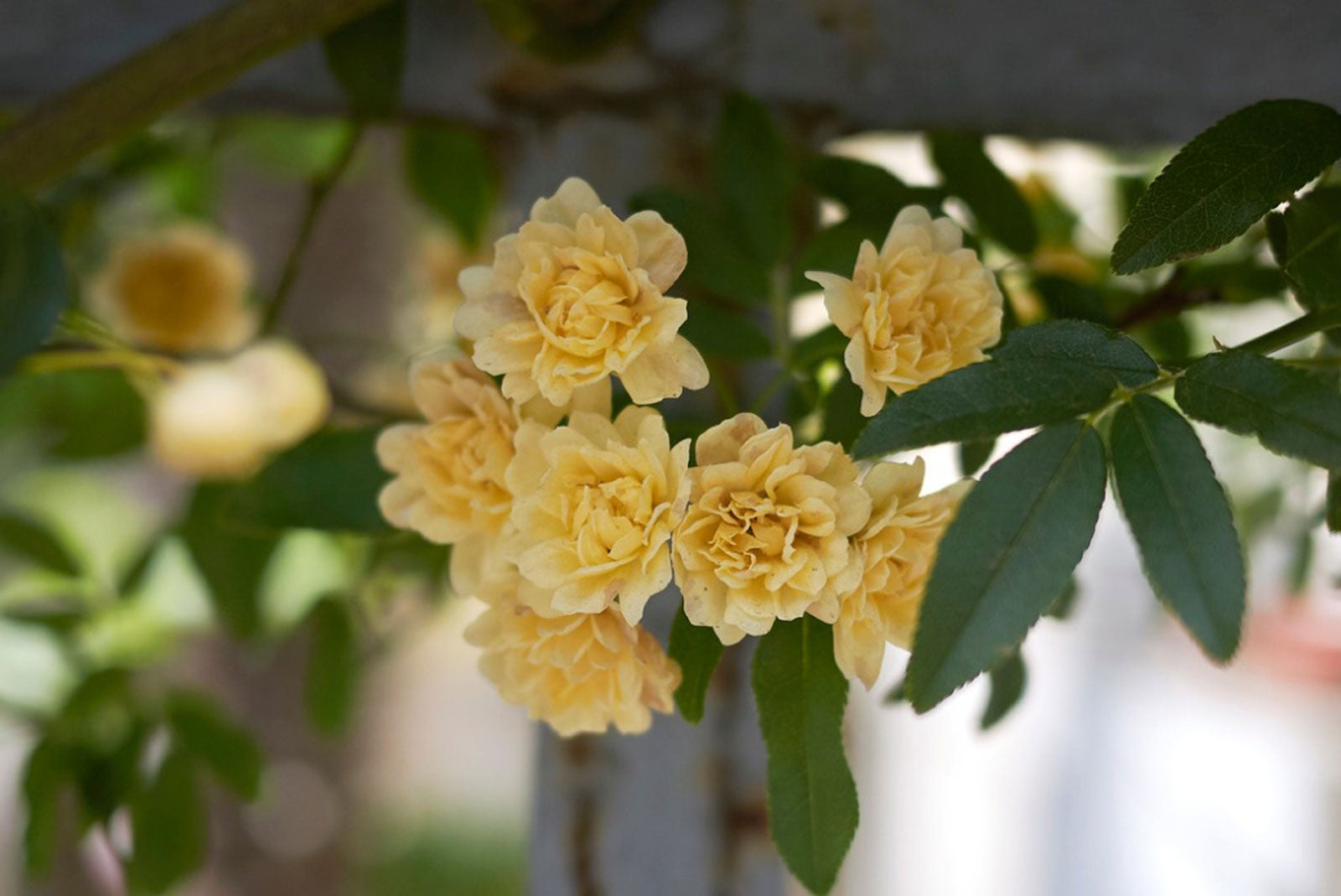Lady Banks Rose Growing: How To Plant A Lady Banks Rose


Who would have thought that in 1855 a homesick bride would plant what is now the largest rose bush in the world? Located in Tombstone, Arizona, a double-white Lady Banks climbing rose covers 8,000 square feet (743 sq. m.). That's just under 1/5 of an acre! Read on for more Lady Banks rose growing info.
What is a Lady Banks Climbing Rose?
Lady Banks (Rosa banksiae) is an evergreen climbing rose which can send out thornless vining branches over 20 feet (6 m.) in length. Hardy as an evergreen in USDA zones 9 to 11, Lady Banks can survive into USDA zones 6 to 8. In these colder climates, Lady Banks acts like a deciduous plant and loses its leaves during the winter.
The rose is named after the wife of Sir Joseph Banks, director of Kew gardens in England, after the plant was brought back from China by William Kerr in 1807. Lady Banks roses have been cultivated in China for centuries, and the original species no longer exists in natural settings. It's believed white is the original color of the Lady Banks climbing rose, but the yellow cultivar “lutea” is now more popular.
How to Plant a Lady Banks Rose
Choose a location that receives full sun for the Lady Banks rose. Growing these roses on a trellis or planting climbing roses near a wall, pergola, or archway is highly recommended. This rose is tolerant of many types of soil, but good drainage is necessary.
Propagation of Lady Banks is by asexual cuttings. Softwood cuttings can be taken during the growing season. Once rooted, plant cuttings in pots for transplanting in late spring or fall. Hardwood cuttings taken during winter dormancy can be planted directly into the ground during early spring. These can be planted as early as six weeks prior to the last frost date.
How to Train Lady Banks Rose
Lady Banks rose care is much easier than other cultivated roses. They don't require the typical fertilizing or pruning required by other roses and rarely succumb to disease. Deep watering is not necessary to stimulate foliage and flower growth.
Over time, the Lady Banks climbing rose forms a strong tree-like trunk. It does take time to become established and may not bloom for the first year or two. In hot climates and during dry spells, regular supplemental watering may be necessary.
Sign up for the Gardening Know How newsletter today and receive a free copy of our e-book "How to Grow Delicious Tomatoes".
Lady Banks roses require little training. They are fast growing vines and, in many cases, need vigorous pruning to keep them in the desired space. Lady Banks only blooms in the spring on old wood. In order not to inhibit flower production the following spring, they should only be pruned immediately after blooming up to the beginning of July (Northern Hemisphere).
Lady Banks climbing rose is the quintessential cottage garden flower. They provide a blanket of small, single or double flowers in shades of white or yellow. Although they only bloom in the spring, their attractive delicate green leaves and thornless stems provide season long greenery that lends an old-fashioned romance to the garden.

Laura Miller has been gardening all her life. Holding a degree in Biology, Nutrition, and Agriculture, Laura's area of expertise is vegetables, herbs, and all things edible. She lives in Ohio.